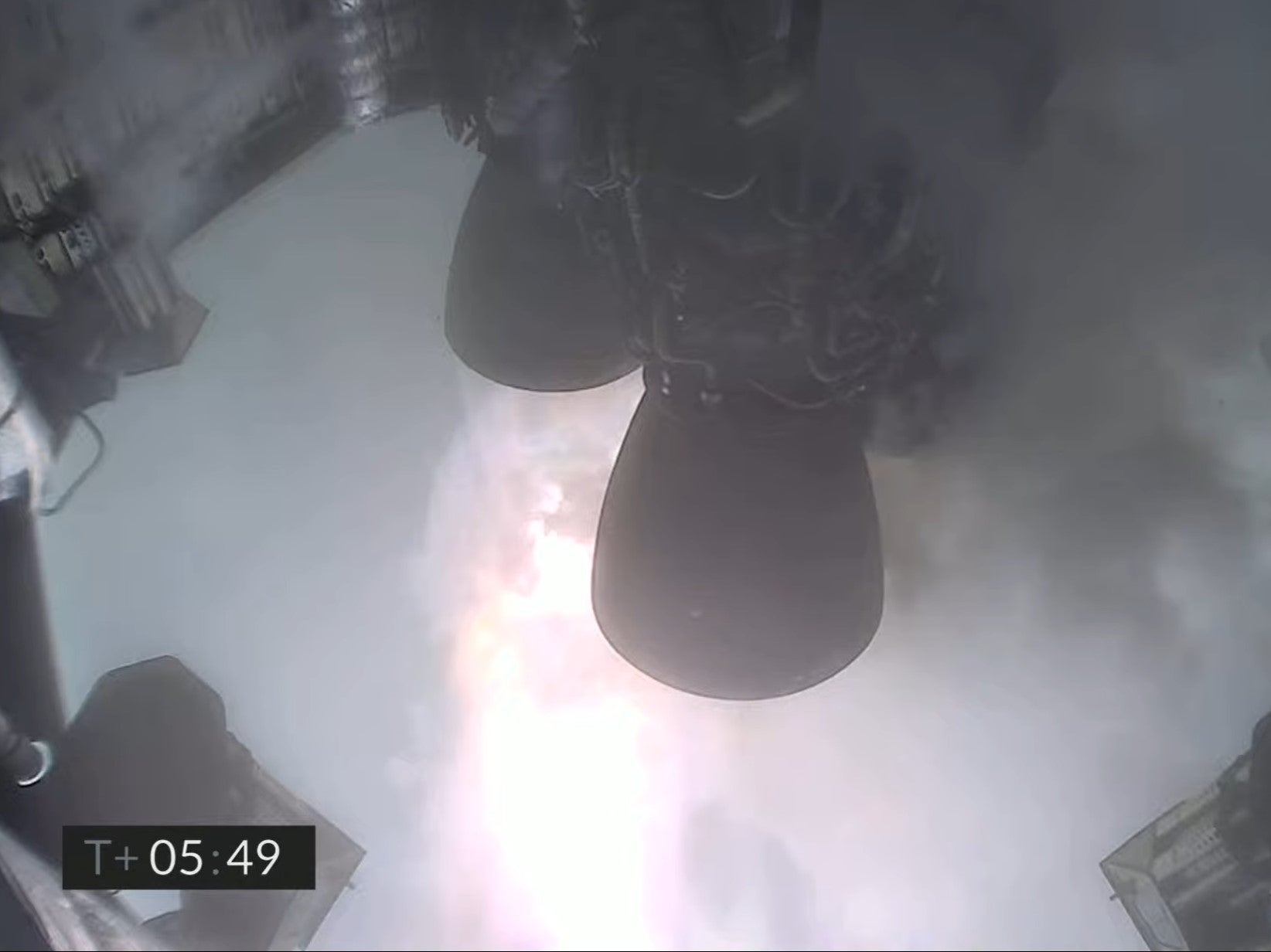Elon Musk reveals cause of mysterious Starship explosion as SN15 prepares for launch
Thick fog at SpaceX’s launch site meant it was impossible to see what actually took place

Your support helps us to tell the story
From reproductive rights to climate change to Big Tech, The Independent is on the ground when the story is developing. Whether it's investigating the financials of Elon Musk's pro-Trump PAC or producing our latest documentary, 'The A Word', which shines a light on the American women fighting for reproductive rights, we know how important it is to parse out the facts from the messaging.
At such a critical moment in US history, we need reporters on the ground. Your donation allows us to keep sending journalists to speak to both sides of the story.
The Independent is trusted by Americans across the entire political spectrum. And unlike many other quality news outlets, we choose not to lock Americans out of our reporting and analysis with paywalls. We believe quality journalism should be available to everyone, paid for by those who can afford it.
Your support makes all the difference.SpaceX boss Elon Musk has blamed a “relatively small” methane leak for causing the latest Starship test to end in a mid-flight explosion.
Starship SN11 blew up less than six minutes after lifting off from SpaceX’s Boca Chica facility in Texas last week, during a launch and landing attempt in heavy fog.
Poor visibility meant it was not immediately clear what happened, with SpaceX initially giving no reason for the Starship prototype experiencing a “rapid unscheduled disassembly” at the start of its landing procedure.
Investigations into the flight data have since uncovered a methane (CH4) leak, which is used as a propellent for the next-generation rocket’s Raptor engines.
“Ascent phase, transition to horizontal and control during free fall were good,” Mr Musk tweeted in reply to one of his followers inquiring about the investigation.
“A (relatively) small CH4 leak led to fire on engine 2 and fried part of avionics, causing hard start attempting landing burn in CH4 turbopump. This is getting fixed 6 ways to Sunday.”
Read more:
Whatever fix is introduced will be tested on the next prototype – Starship SN15 – which is expected to launch at some point this month.
Residents of Boca Chica Village have shared images of Starship SN15 nearly fully assembled at the launch site. This suggests a flight test could take place as early as this week, though there are currently no local road closures scheduled.
If Starship SN15 is able to land successfully, it will be the first major flight test for a Starship craft to not end in a fiery explosion.
It will also mark a significant milestone towards Mr Musk’s ambition of sending humans to Mars within the next four years aboard a Starship rocket.
The technology billionaire hopes to build up to 100 Starships every year, with each one capable of carrying up to 100 people onboard, as well as cargo.
The eventual goal is to establish a self-sustaining human colony on Mars, which Mr Musk claims could be achieved by 2050.
Join our commenting forum
Join thought-provoking conversations, follow other Independent readers and see their replies
Comments